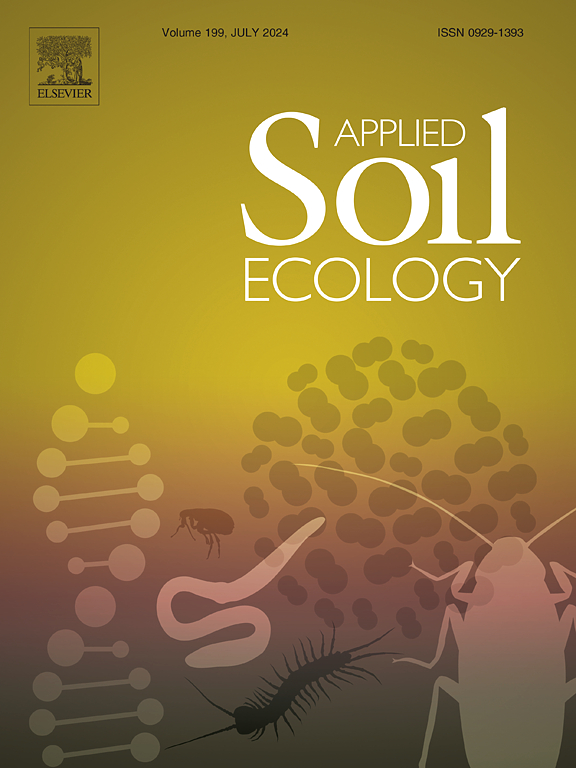Soil depth shapes the microbial response to land use and climate change in agroecosystems
IF 4.8
2区 农林科学
Q1 SOIL SCIENCE
引用次数: 0
Abstract
Soil microbial communities are vital for ecosystem functions and are strongly affected by land use and climate change, yet the specific impacts in deeper topsoil layers remain unclear. This study investigates these effects across three topsoil layers after eight years of experimental treatments at the Global Change Experimental Facility (GCEF) in order to unravel the role of different topsoil layers in the response of microbial communities to land use and climate change. Distinct effects of land use and climate change on microbial biomass, community structure, and functions in agroecosystems were observed, with the upper 15 cm of soil exhibiting the strongest responses, and more pronounced land use impacts than those of climate change. Although spring climate treatment including higher precipitation and higher temperature provided favorable conditions for microbes, negative effects, possibly a legacy from previous summer droughts, persisted. Despite a decrease in microbial abundance and activity with depth, a diverse microbial community persisted throughout the topsoil due to organic material input. Grasslands exhibited greater changes in microbial community structure and reduced biomass and functionality with depth, whereas tilled croplands showed less pronounced depth effects. Thus, deeper topsoil layers were more critical for soil functionality in croplands. Surprisingly, responses to experimental treatments were partly reversed in deeper soil layers compared to the uppermost layer, suggesting a buffering role of deeper layers against disturbances. These findings emphasize the importance of considering soil depth and land management practices in global change studies to fully understand impacts on soil health and ecosystem functioning. However, croplands' reliance on deeper soil layers suggests vulnerability to additional stressors, underscoring the need of balanced land management practices to ensure long-term ecosystem resilience.
求助全文
约1分钟内获得全文
求助全文
来源期刊

Applied Soil Ecology
农林科学-土壤科学
CiteScore
9.70
自引率
4.20%
发文量
363
审稿时长
5.3 months
期刊介绍:
Applied Soil Ecology addresses the role of soil organisms and their interactions in relation to: sustainability and productivity, nutrient cycling and other soil processes, the maintenance of soil functions, the impact of human activities on soil ecosystems and bio(techno)logical control of soil-inhabiting pests, diseases and weeds.
 求助内容:
求助内容: 应助结果提醒方式:
应助结果提醒方式:


